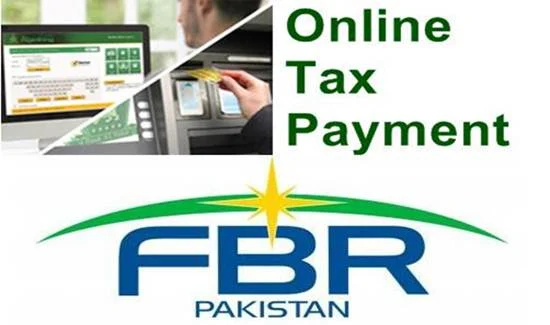FBR (Federal Board of Revenue) has taken initiative to pay income tax, sales tax, customs duty and excise duty online through internet banking, mobile banking and ATM. It is the round-the-clock facility provided to pay customs duties, taxes and other dues electronically from his bank account through internet banking, ATMs or bank’s mobile applications. Taxpayers can use this facility to pay taxes directly from their bank accounts. Availability of this online tax payment option will bring efficiency and convenience for the taxpayer and improve tax collections.
 |
| Online Tax Payment |
Procedure for Online Payment of Taxes
Step 1: Creating PSID from FBR's Website
1. In order to pay your tax dues, the person has to log into FBR’s efile system by using the same credentials you used to log into Iris. After logging, access the e-Payments tab.
2. In the e-Payments tab, access Create Payment and then select an appropriate option from Income Tax Annual Return/ Sales Tax/ Federal excise etc.
On the next page, a payment slip ID (PSID) will be created by:
- Selecting the relevant Tax Year
- Typing the Tax amount due
- Selecting the mode of payment (select ADC to pay online)
3. This will create your e-Payment slip.
4. Click the print button to download the PSID. You can deposit the tax amount by using PSID online or by physically visiting your bank branch.
5. Note down the PSID number on completion of payment for further processing.
Step 2: Online Payment of Taxes through Internet Banking or ATM
- Log in to the online/ internet/ mobile banking system of your bank or visit ATM facility.
- Go to the Bill Payment section and select "FBR" as a biller.
- Enter PSID number generated by Iris system.
- After entering PSID number, the payment details shall be visible to the taxpayer for approval of the payment of taxes. Upon confirmation, the bank account of the taxpayer shall be debited and a message of the successful transaction shall be visible on the screen.
- The payment will be provisionally authorized after confirmation from the taxpayer. Within 03 hours of confirmation, the payment will be marked as paid. A computerized payment receipt (CPR) will be provided to the taxpayer through e-mail and confirmation message sent on SMS. CPR will also be available to FBR system for use.
How to Make Tax Payments through ATMs
You can make tax payments through ATMs of many major banks. Here is the procedure for Standard Chartered Bank. Follow these steps to make the payment:
Go to Main Menu > Bill Payment > Tax Company > FBR e-Payment. Insert your Payment Slip ID in the field to proceed with the payment request.
Tax Payment through Bank Branches – Over the Counter (OTC)
FBR dues can be deposited Over the Counter by visiting your bank branch.
- Provide the system generated FBR tax challan containing a PSID number, along with the amount and other relevant particulars.
- In addition to the challan form, the depositor shall be required to present Bank’s prescribed deposit slip, duly filled and signed by the depositor. The title of the beneficiary on the deposit slip must be mentioned as “Federal Board of Revenue”.
List of FBR's ADC enabled Banks
- Askari Bank
- ABL
- Bank Alfalah
- Bank of Punjab
- Bank Al Habib
- Bank Islami
- Faysal Bank
- Habib Metro
- HBL
- ICBC
- JS Bank
- Meezan Bank
- MCB
- NBP
- Soneri Bank
- Summit Bank
- Silk Bank
- UBL
I hope this post has clearly described the whole procedure for payment of taxes and duties online as well as at Banks' Over the Counters. However, if you have any further query, you can ask in the comments section.

Can PSID payment be made by another person through his bank account or it should only be done through account owned by the tax payer?
ReplyDelete